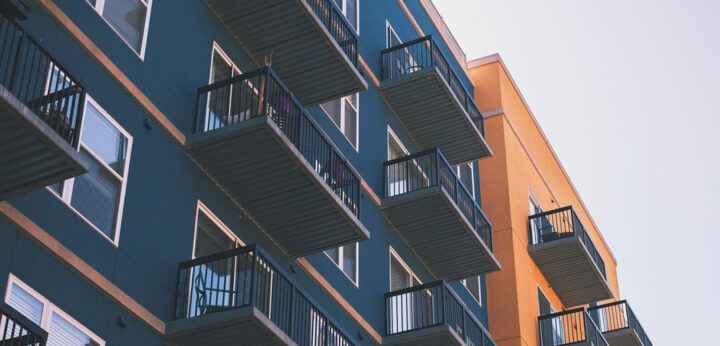Table of Contents
What do you need to rent an apartment for the first time?
As a first-time apartment renter, you want to know what the application process involves. Different landlords, apartment complexes, and property management companies have different requirements, but there are some commonalities you’ll see again and again.
When you’re preparing to lease an apartment for the first time, you need to take the following steps:
- Know your credit score. (Understanding how credit scores work and how you can improve yours may be the difference between getting your dream rental or not.)
- Provide proof of employment, bank statements, and tax returns
- Provide personal references
- Consider having a guarantor co-sign your lease
1. Know your credit score
Apartment management companies usually check your credit when you file an application. The higher your credit score, the more confidence they’ll have in your ability to pay your rent on time.
You can get your score for free at AnnualCreditReport.com. Use this site specifically — it’s the only one authorized by the federal government to provide consumers with their credit scores. You don’t want to get scammed.
Some apartments require a minimum credit score of 620 to 650. If your score is lower than that, you’ll have to look elsewhere, although you might be able to convince the landlord or property management company to make an exception by paying a larger deposit or agreeing to have someone co-sign your lease. Some states also have programs for first-time renters, so do a quick web search to see if anything like that’s available to you.
2. Provide proof of employment, bank statements, and tax returns
Again, landlords want to see that your income is stable and high enough to cover your rent. As a general rule, that means you should earn roughly two to three times more than you’ll have to pay each month.
Be prepared to verify your income by providing bank statements, tax invoices, or an employment letter. These documents show your work history and indicate financial stability.
If you’re self-employed, your landlord may ask for additional proof of stability. Collect as many client invoices and contracts as you can, just in case. You can even ask your accountant to provide an estimate of your next two years’ income.
3. Provide personal references
Rental applications often ask you to list previous landlords or apartments. First-time renters don’t usually have any of these, but don’t worry! You can collect personal references as an alternative.
Personal references, sometimes known as character references, vouch for you as a responsible tenant. Your references can consist of your current or past employers, relatives, or friends. It’s not a job application, so they don’t need to be professional contacts.
4. Consider having a guarantor co-sign your lease
Many first-time renters are unemployed graduates, students or young professionals. If you fall into any of these categories, your credit score will usually be relatively low (or even nonexistent).
If you’re getting an apartment with no job, you might have an even tougher time getting approved on your own. Someone without steady income or a history of financial stability is a pretty big risk for a landlord.
Fortunately, you can lower that perceived risk by having a guarantor or cosigner on your lease. A guarantor is a person who agrees to cover rent if you can’t or don’t pay.
A cosigner serves the same purpose as a guarantor but lives in the unit with you. If you have an older roommate who has good credit, they can serve as your cosigner.
Your landlord may require you to have a co-signer or guarantor if you’re renting at 18. Some states still consider you underage at that point and will ask to have a legal adult on the lease.
Six tips for first-time renters
Planning can go a long way when you’re a first-time renter. Here’s what you need to know when renting a house or apartment, from the financial to the logistical.
1. Have a clear budget
Of all the apartment leasing tips out there, this one is the most important. Regular on-time rent payment will get your credit history started on the right foot, as long as you stay financially responsible in other areas of your life as well.
You can only pay your rent in full and on time if you can afford it, so make sure you do the math in advance.
For your first lesson in apartment renting 101, set out a clear budget that considers the following:
Rent and security deposit
The general rule of thumb is to spend no more than 30% of your income on rent. This should be the first line item in your “necessities” budget, which should also include expenses like utilities, insurance, and food.
One popular budgeting technique you can use is the 50/30/20 rule. This framework, endorsed by the Consumer Financial Protection Bureau, asks you to allocate:
- 50% of your take-home pay to your immediate needs (including rent)
- 20% or more to savings and debt payments (including student loans)
- 30% or less to your wants
Be aware that your housing costs in your first month of renting will be higher than normal. Most landlords require new tenants to pay at least one month’s rent, and many require the first and last month upfront.
In most cases, you’ll also have to submit a security deposit, a one-time payment that provides additional protection to your landlord. You usually get the security deposit back when you move out, unless:
- You leave before your lease ends, without prior agreement with the landlord
- You damage the property beyond normal wear and tear
Most security deposits also equal a month’s rent, though the total amount is up to the landlord. Most states have security deposit maximums. Check these before you sign your lease, especially if your landlord is asking for more than the equivalent of one month’s rent.
Utilities cost and monthly expenses
Before you sign a lease, check which utilities are included and which you’ll need to obtain and pay for yourself. Some landlords include heating costs, hot water, and even electricity in your monthly rent.
If you’re responsible for any utilities, familiarize yourself with average costs in your state. Also, ask your landlord how much prior tenants have paid for utilities. Amounts can vary by town and type of heating or cooling system.
Renters insurance
Renters insurance isn’t legally required, but landlords can require you to get it. Fortunately, the average cost of renters insurance only ranges from $15 to $20 per month, which means it’s one of the cheapest kinds of insurance out there.
Even if your landlord doesn’t require renters insurance, it’s a smart idea to have it. Renters insurance covers fires, storms, and theft, all of which can happen to anyone. Without insurance, you could end up spending tens of thousands to replace your belongings. Renters insurance will also cover you if someone gets hurt on your property and you’d otherwise be liable for your guest’s medical bills.
Having renters insurance almost always saves money in the long run, so be sure to budget for it.
2. Start your apartment search at the right time
The best time to start looking for an apartment is one to two months before you move out of your current place. That gives you enough time to shop around, apply, get approved, and arrange for your move.
If your moving date is flexible, consider looking for an apartment during the winter. There’s generally less demand during the colder months, which means that rent prices are often lower.
3. Negotiate your rent
Don’t assume that the monthly rent on the apartment listing is set in stone. Landlords often have a bit of wiggle room, so check if the rent is open for negotiation.
As someone renting for the first time, you want to bring up the subject before you sign the lease. You’ll need to offer something to sweeten the deal, especially since you don’t have a years-long rental history proving that you’re the perfect tenant.
There are a few ways that a first-time renter can catch a break on rental costs:
Commit to a longer lease
Most leases are year-long, but some landlords will reduce your rent if you commit to a longer tenancy. Offer 18 months or two years if you can.
Make a deal for reducing amenities and maintenance services
You may also be able to reduce your rent by opting out of certain amenities and services the landlord offers. For example, if you commit to making small repairs yourself rather than filing a maintenance request, your landlord might charge you less.
Pay in advance
If your finances allow it, offer to pay several months’ rent in advance. This shows the landlord that you’re financially stable and committed to your responsibilities as a tenant. Depending on how far in advance you pay, your landlord might reduce your rent in exchange.
4. Read and understand your lease
An apartment lease is a binding legal contract. By signing, you’re agreeing to all terms, even the ones you didn’t notice.
Read through the entire lease agreement before you sign. Make note of all terms, including rent payment requirements, as well as seemingly smaller rules like whether you can redecorate, how many people you can have over, and so on.
Know the contract you’re signing and your rights as a tenant. Landlord-tenant law varies from state to state, so take the time to familiarize yourself with your state’s regulations in detail. It might keep you from unknowingly agreeing to something that your landlord isn’t allowed to ask (like utility shut-offs if you don’t pay your rent).
If there’s anything illegal in your lease, it probably won’t be enforceable, but you still want to avoid the hassle of having to fight your landlord over it.
Find out if your landlord allows subletting
If you ever need to be away for an extended period, you might decide to sublet your apartment. Subletting is a temporary arrangement in which you, the person on the lease, rent part or all of your apartment to someone else.
You collect rent from your subletter, but you continue to pay your landlord as normal. It’s a common solution to many logistical challenges — a semester abroad, a summer job, and so on. But you do need to have your landlord’s approval, or you and your subtenants might face eviction. Check your lease before you look for a subletter.
5. Fill out an apartment rental checklist
Before you move into an apartment, schedule a time to walk through and inspect it with your landlord or rental agent. Your landlord will have already looked it over, but you’ll want to see everything with your own eyes.
An inspection will reveal whether anything is excessively dirty or needs repairs. Those imperfections might not show up on your landlord’s list of damages.
You’ll want to document any existing damage to the unit (that means taking pictures, so bring a camera or your smartphone). You don’t want money taken out of your security deposit if the problem was there before you moved in.
6. Prepare another checklist of essentials that you need to buy
Preparing an apartment move-in checklist will make your moving process easier. Your checklist will include everything you need for your new place, like new furniture, supplies, and so on.
The easiest way to prepare a checklist as a first-time renter is to walk through your new place room-by-room. Note the essentials that you’ll need for each space, then list general cleaning and repair supplies like sponges, brooms, and hand tools.






